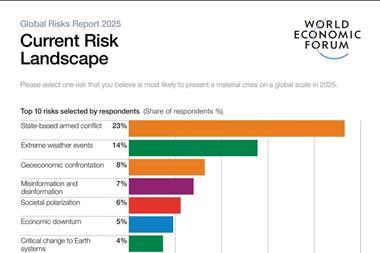Why firms must proactively construct risk management capabilities to keep pace with transformative change
Over the last 18 months, global businesses have been faced with a vast number of challenges. Not only have companies had to navigate the global pandemic, but they also had to ramp up the use of technology to better manage day-to-day internal operations.
Getting acquainted with a hybrid working model, as well as staff shortages and economic uncertainties, all served to disrupt a number of sectors, and as a result, many organisations adopted innovative technologies to manage the change.
However, with the increase in reliance on next-generation technology, there is also an increase in the risks that need to be mitigated.
Emerging risks for a new era
The pandemic taught business leaders that risk management is incredibly important and yet often overlooked.
In a survey of over 500 global board members and CEOs, only 40% were satisfied with their management of potential and atypical risks, with one major obstacle being the lack of internal talent and skill-sets which could better enable the transformation of enterprise risk management (ERM).
Some of the biggest risks for global business in 2022 include data breaches, climate change, and the great resignation - and without having the necessary frameworks, processes, or people in place, managing these risks simply cannot be effective.
However, by utilising next-generation technology to implement the right parameters, companies can capture and report internal data far better, encouraging a clear audit trail to be established.
This helps to track security breaches and other potential threats, thereby building a greater understanding of risk management frameworks, and communicating the right information to key decision-makers.
Kristina Davis, a partner with Deloitte Risk and Financial Advisory, observes that “Organisations that proactively construct advanced risk management capabilities to keep pace with transformative change have the opportunity to gain significant competitive advantages.”
Risk management is increasingly becoming a board-level discussion to form strategic and operational decisions. Innovations in technology to tackle governing industry factors can be a means of aiding organisations to rethink and restructure their risk strategies into future-proofed and effective risk programs.
Proactive risk management strategies
In the past, risk management was often an exercise in minimising the damage rather than stopping the threat. Implementing a proactive risk management approach allows organisations to avoid potential and existing risks, and enables them to defend themselves against unfavourable events.
Understanding the potential risk and its effect empowers companies to lessen the impact or, ultimately diminish their loss. The adoption of an efficient risk identification and management plan reduces an organisation’s exposure to potential threats.
According to the EY Global Board Risk Survey of 2021, 71% of risk management leaders of organisations who are deemed highly effective at risk management utilise data and technology effectively. The successful use of data and technology to manage operational risks is crucial to differentiate leading organisations.
Automation technology, such as collecting, processing, and monitoring data in real-time, will be able to flag potential threats sooner than manually possible – allowing risk professionals time to focus on the evaluation of the identified threat and halt it before it reaches its target.
Accordingly, 69% of organisations plan to increase their investment in data and technology to enhance their risk management processes.
The key to business success
Today, these processes and regulations should be coherent and uniform across the entire organisation. However, the ‘one size fits all’ approach should continually evolve to provide flexibility and adaptation for unique threats and disruptions.
The need for an interactive and collaborative process with a robust feedback mechanism is undeniable.
C Ramanathan, head of Risk and Control at United Spirits LTD, explains that “In today’s disruptive business environment, if successfully managed, strategic alliances create an adaptive ecosystem that is a vital tool to drive technological innovation, thereby decreasing volatility and opening up opportunities while optimising risks.”
Unquestionably, organisations could do much more when it comes to risk management, as prevention is surely better than cure.
While the evolution of technology overwhelms organisations, these transformations provide the opportunity to proactively re-examine their risk management processes – all whilst presenting a competitive edge to those businesses that are able to anticipate future threats.
Ryan Swann is a founder at Risk Smart




















No comments yet